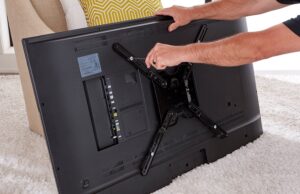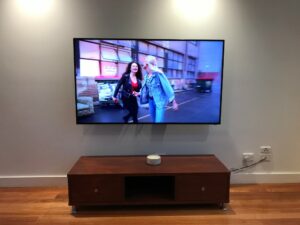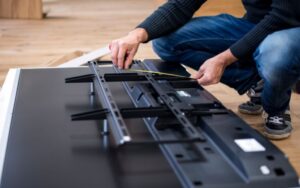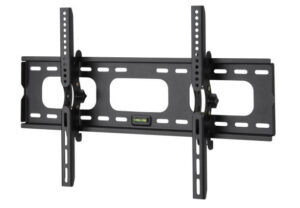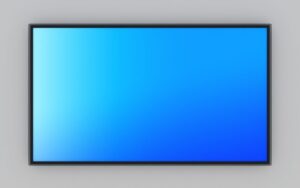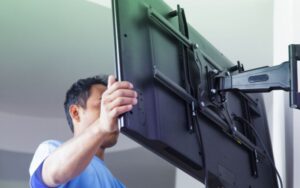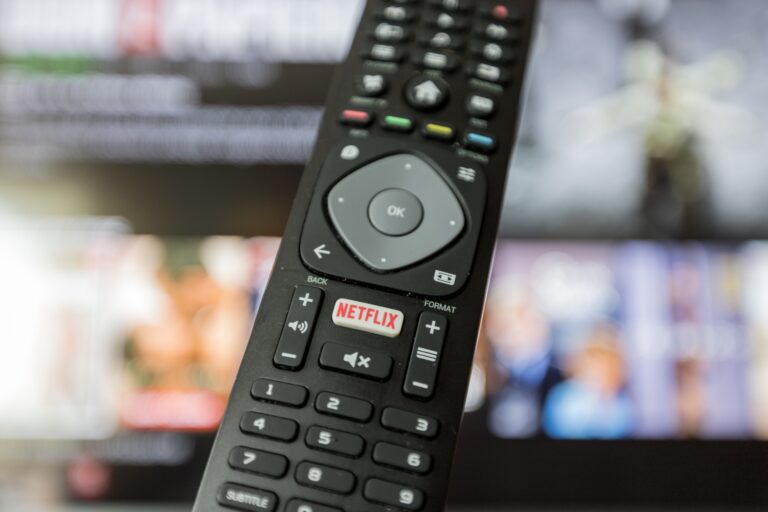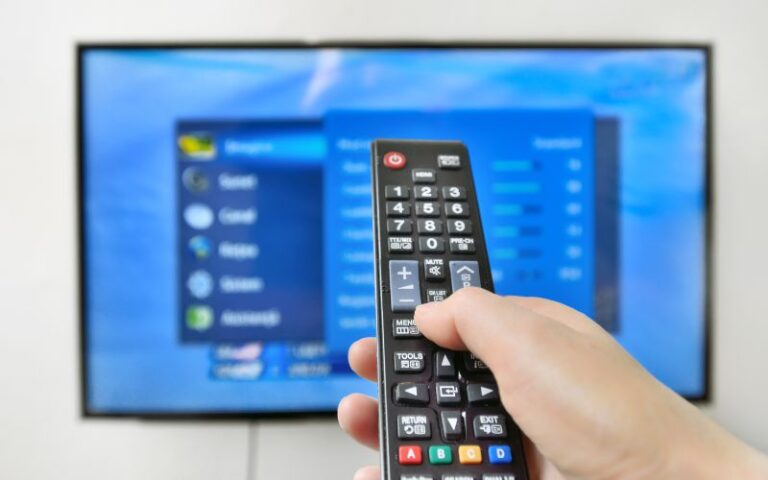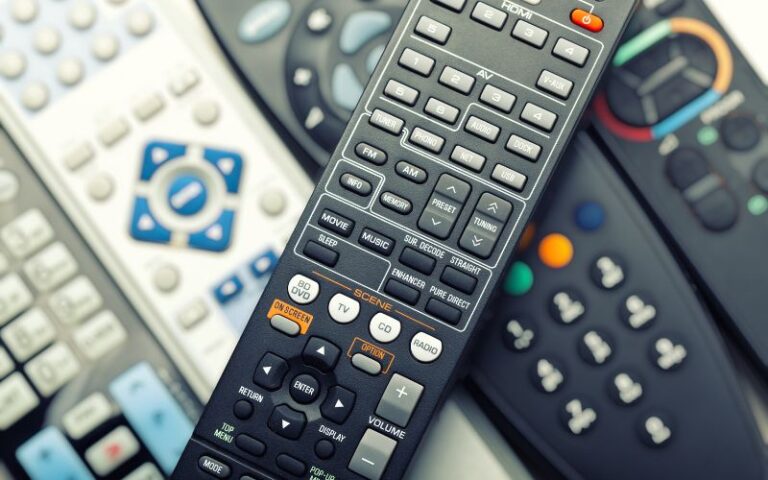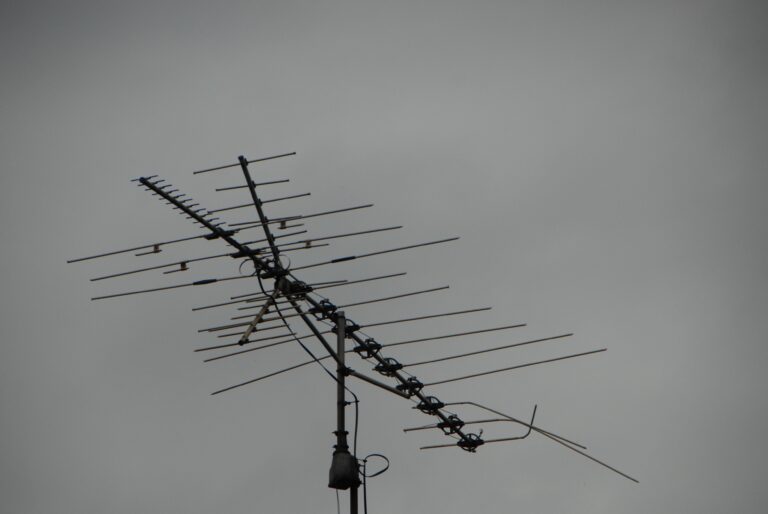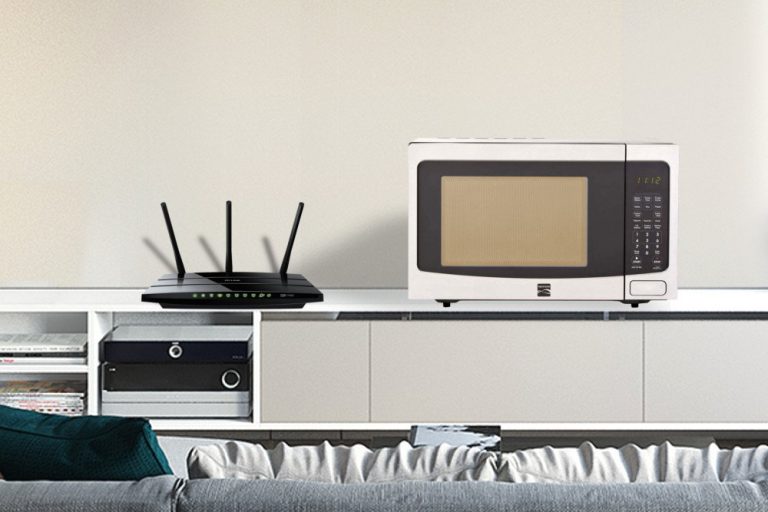How Easy is It To Move A Tv Aerial Socket? (Answered)
Proper tv aerial installation is very important if you want your house to receive a good quality signal. And one of the appliances you need is an aerial socket.
However, what if your aerial socket is far from where you want to mount your television? Is it easy to move the TV aerial socket?
When your TV aerial socket is fixed at the wrong wall, it’s easy to move it to the right place you want it to be. The best route to move an aerial socket through depends on the wall structure, whether it’s a solid or stud wall.
Is It Difficult to Move a TV Aerial Socket?
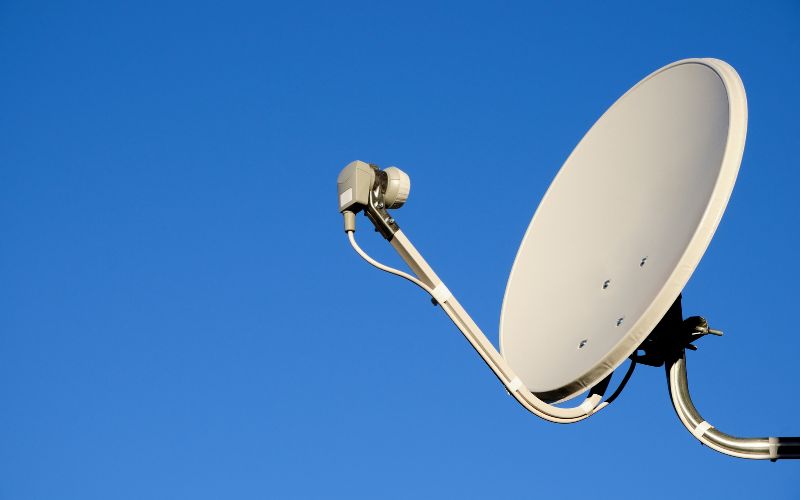
Moving a TV aerial socket is not difficult since fitting a cable behind the stud is easy.
But if you are moving the tv aerial socket to an opposite wall, you have to cut holes in the wall.
A TV aerial is a television antenna that you mount remotely. It would be best if you connected the antenna to the TV through cables and connectors since they are not inbuilt.
A TV aerial socket is the main component connecting a TV antenna to a TV set. It is also known as a coaxial or aerial socket.
The coaxial socket is mainly fixed on walls to access roof-mounted satellites, television cables, and antennas.
Furthermore, a TV aerial socket can also work with a terrestrial wire and a satellite television service.
You can also see this socket on a television, video cassette recorder, digital video recorder, and other electronic appliances.
The coaxial socket has two main types: Belling Lee and F barrel sockets.
#1. Belling Lee (BL) Socket
The Belling Lee female socket is the main TV socket you use at home. This socket comes in different varieties for houses.
You can mount the socket on the wall plates or get a fascia mount version. You can also buy the BL socket as an adaptor and plug attached to a cable end.
When using a Belling Lee as your TV aerial socket, there are some things to keep in mind:
- Ensure F connectors are connecting the cable in the wall. Doing so will reduce the loss and noise of the signal.
- Also, you need to check if the F connector is a compression type. Different F connectors, such as the toolless twist, are not good for connection.
| Pros | Cons |
|---|---|
| It’s easier to connect a TV fly lead to the sockets. | The sockets get damaged quickly by rough insertion. |
| Aerial sockets aid easy removal of the fly lead. | It has a higher loss than the F connector. |
#2. F Barrel Sockets
This type of socket is common in houses as Foxtel or other pay TV sockets. You can also use this socket with digital television.
The F sockets are majorly recommended because they have fewer losses than the BL connector and are not easily destroyed.
#3. Advantages
- It has less noise and loss.
- It is more durable mechanically.
#4. Disadvantages
- You need to screw a TV fly lead on and off. Thus making it difficult to install and remove.
- It is not popular among consumers.
- You must buy the right F to F TV fly lead and the appropriate angle F to F adaptor.
Do You Need a Technician to Move a Tv Aerial Socket?
If you don’t know how to move a TV aerial socket, it’s best to contact a technician to do it for you.
It’s possible to install a TV indoors without an aerial socket. You only need to buy a mobile indoor aerial.
However, if the room has bad reception, you will not enjoy watching your television.
Aside from the Belling Lee and F barrel sockets, there are other types of aerial sockets you can install at home. Some of them include:
#1. Coax IEC Sockets
This socket is the sockets people know. This type of outlet is mainly for TV aerial connections and FM radio.
It would help if you had a fly lead or cable with an IEC coaxial plug at the tip to connect to this socket.
The type of aerial cord plug you will need depends on the socket connection: if it’s male or female.
For the female IEC coax sockets, you need a cable that has a male coax plug at the end to connect your television.
You can connect with a male plug with a coaxial coupler at the end. Doing so will give you a female connection.
However, connecting your TV to the male IEC coax sockets requires a cable with a female plug at the end.
Furthermore, you can buy a radio frequency (RF) with a male and female connection at each end. The RF is mainly for looping in and out of the equipment.
#2. Screened and Unscreened Sockets
If you are deliberating whether to go for a screened or unscreened socket, it’s best to choose the screened socket.
The cable termination of screened socket comes with a metal housing that prevents radio frequency leakage and signal loss.
It also guards against impulse disturbance and EMI interference, making the TV picture pixelated.
In addition, the metal housing secures your connection, making it difficult to stumble, fall out, and break.
An unscreened socket lacks a metal housing, exposing the cable termination. The sockets are liable to experience undue signal failure.
They can also act as a vulnerable point in the TV system and allow interference to penetrate through the coaxial cable, resulting in a signal loss.
It would be best if you had a back box installing screened and unscreened sockets.
The screened sockets will require nothing less than a 25mm back box to fit the cable and termination perfectly.
#3. Diplexed, Triplexed, and Quadplexed Socket
A diplexed socket is a twin TV outlet with two connection types but only one coaxial cable input.
Since it has just one cable input, there must be a single combiner or a diplexer that incorporates two different signals. The most popular type of this socket is a TV/FM socket.
A triplexed socket has separate connections for three different signals with one cable.
It would be best if you used a triplexer or a multi-switch amplifier to combine these signals.
A quadplex socket has different connections for three varying signals and an extra connection for a satellite.
However, this socket has two cord inputs mainly used for multi-switch amplifiers. You can also use a cable that carries the first and second input off the socket.
The benefit of using diplexed, triplexed, and quadplex sockets is that more signals can be circulated through one system, and it does not require adding or reducing the number of cables. It also saves the time and money you will spend.
How Much Would a Technician Charge Move a Tv Aerial Socket to Another Wall?
Moving an aerial socket to another wall, it’s best to budget not less than 100 dollars for materials and labor costs.
The prices range on the complexity of the job, the duration, and if it requires any additional components.
Different factors affect the cost of moving your aerial socket.
- TV aerial socket location
- Your locality
- Your wall type
- Your building type. Suppose it’s either a single-story building or a multiple-story building.
How Do You Move a Tv Aerial Socket to Another Wall?
To move a TV aerial cable to another wall, you need to follow the steps below:
- Fit a new coax cable to the aerial.
- Run it down the outside wall, where you can puncture a hole of about 10mm through the wall to the region you want to position your coaxial socket.
- When you are through, close up the hole to prevent dampness.
Nonetheless, if you are confused about how and where to move your aerial socket, it’s good to contact professionals so they help you.
What Can You Do If Your Tv Aerial Socket Is on the Wrong Side of the Room?
If your coaxial socket is on the wrong side of the room, you can run a cable at the edge of the skirting board under the patio doors for a temporary connection.
Also, you can call a technician to install the socket at the right place, or you might decide to do it yourself.
#1. Steps to Install Tv Aerial Socket
- Cut the external cable sheath and peel it to the length you need.
- Peel off the additional sheath and uncover the essential copper knitted screen.
- Turn the screen to the back, over the external sheath, and cut a small length of the internal insulation. Doing so will bring out the inner core.
- Match the internal core to the middle terminal and attach the screw tightly.
- Put the cord section with the screen under the cable buckle and fasten the bolt fully.
- Make sure the cord buckle grips the knitted screen securely. The braided screen must not touch the middle terminal.
If you are connecting a dual aerial socket, you separately connect each socket following the process above.
#2. When connecting the coaxial sockets, put this in mind:
- All your work must follow the wiring regulations.
- Read instructions carefully.
- You must tighten the metal plate sockets and switch properly.
- You must cut off the power supply before installation.
- Use the right cable recommended.
Conclusion
It’s not as difficult as it seems to move a TV aerial socket when it’s not in the right place. You can move the socket yourself or let technicians do the job.
If you move the socket yourself, ensure you do it correctly to avoid complications. But if you don’t know what to do, call a professional.

